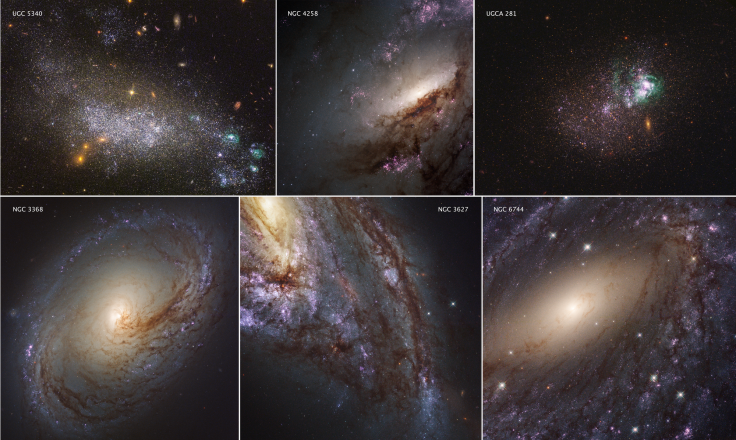Hubble Catalogs Millions Of Massive Young Stars In Ultraviolet From Nearby Galaxies

NASA and European Space Agency’s Hubble Space Telescope has produced one of the most detailed catalogs of star-forming regions present in 50 nearby galaxies within 60 million light years from Earth.
The catalog, created as part of a project called Legacy ExtraGalactic UV Survey (LEGUS), shows the galaxies and their massive, young stars and star clusters in unprecedented detail. As NASA said in a release, the effort would prove critical for understanding formation and development of stars as well as the evolution of galaxies.
"Much of the light we get from the universe comes from stars, and yet we still don't understand many aspects of how stars form," Elena Sabbi of the Space Telescope Science Institute, said in a NASA statement. "This is even key to our existence — we know life wouldn't be here if we didn’t have a star around."
To create the catalog, an international team of astronomers leveraged Hubble’s ultraviolet (UV) observational capabilities. UV light is a major tracer of the youngest and hottest stars in the cosmos and the telescope’s Wide Field Camera 3 and Advanced Camera for Surveys were the perfect candidates to capture them in high-resolution.
The group first assessed some 500 galaxies sitting somewhere between 11 to 58 million light years away from Earth and decided which ones were the best to look at based on their mass, star-formation rate, and presence of elements heavier than hydrogen and helium. Once the final targets were identified, they snapped their images in both visible and UV light over the course of an entire year. The catalog was further enhanced with archival Hubble images to produce a complete picture for analysis.
Due to the element of proximity, Hubble resolved the main components of the galaxies and allowed the researchers to create a catalog with a whopping 8,000 star clusters and another with some 39 million stars.
These stellar clusters, aged between one and 500 million years, are at least 10 times more massive than the largest star clusters observed in the Milky Way, while the stars are at least five times more massive than our sun. The age of stars cataloged in the survey went to a several billion years, but there was also a group of young ones that were no older than 100 million years and shined prominently in UV light.
"We also are offering computer models to help astronomers interpret the data in the star and cluster catalogs," Sabbi added. "Researchers, for example, can investigate how star formation occurred in one specific galaxy or a set of galaxies. They can correlate the properties of the galaxies with their star formation.”
The findings may finally answer several questions related to stellar evolution such as how star-formation is linked to major galactic structures like spiral arms.
© Copyright IBTimes 2024. All rights reserved.





















